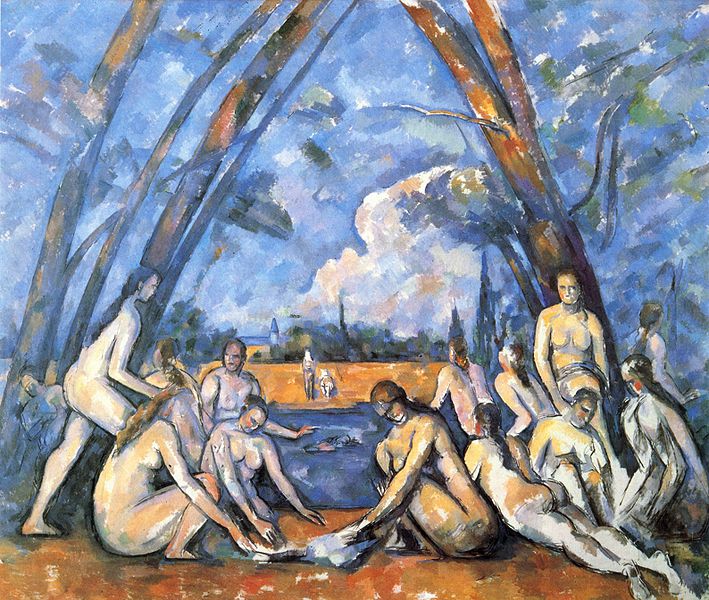| The Bathers | |
|---|---|
 |
|
| Artist | Paul Cézanne |
| Year | 1898–1905 |
| Medium | Oil-on-canvas |
| Location | Philadelphia Museum of Art, Philadelphia, United States |
| Dimensions | 82.875 in × 98.75 in |
| 210.5 cm × 250.8 cm | |
| Famous Paintings by Cézanne | |
| Pyramid of Skulls | |
| The Bathers | |
| The Card Players | |
| The Basket of Apples | |
| Rideau, Cruchon et Compotier | |
| A Modern Olympia | |
| Complete Works |
French artist Paul Cézanne worked an incredible seven years on The Bathers, and even then he considered this work unfinished at the time of his death in 1906. The painting is considered a masterpiece of the modern era. It made the Top 100 on a BBC special of the greatest paintings of the century.
The Vision
This oil on canvas depicts a group of nude bathers relaxing by a body of water under a blue sky on what appears to be a warm, blissful, sunny day. It is dominated by bright water-sky blues. The bathers themselves are rendered in off-white tones enhanced with yellows and pinks.
A small lake in the background is framed by trees leaning inward for a triangular effect, and the composition of the human forms tends to follow this triangular motif, making for an overall symmetrical effect.
Effort to be Unique
Cézanne was said to have purposefully worked diligently to ensure that The Bathers would not be a work which appealed to the masses, or to novice art viewers. Rather, he sought to defy all genre and style. His goal was to create a work of art that was timeless, and which could never be pigeon-holed into a particular school or era. Even so, the work is said to be influenced by Titian and Rubens.
Purchase and Controversy
The Bathers is currently located in the Philadelphia Museum of Art. It was purchased by the Philadelphia Museum of Art in 1937 for $110,000, an enormous sum of money for the day, and for a work of art. In fact, the high price produced something of a local scandal. A local newspaper decried the conditions of the poor in the city of Philadelphia, and suggested the money could be better spent on urban renewal programs. Others praised the wisdom of the purchase, however.
It is important to note that Cézanne painted a number of works called The Bathers, many quite similar to this one, although all of them smaller. Thus, this piece is often referred to as “The Large Bathers.”